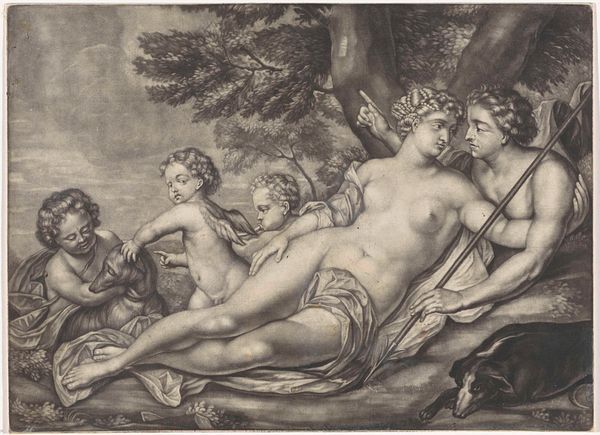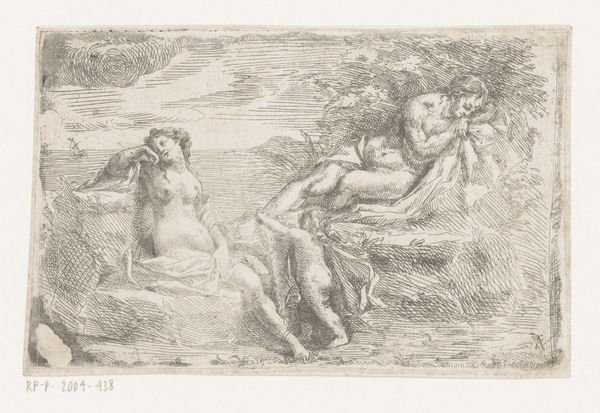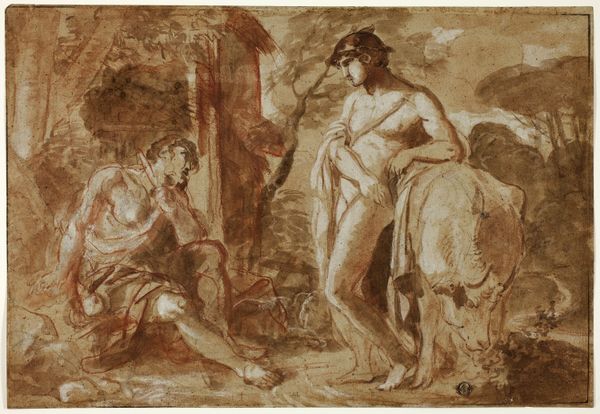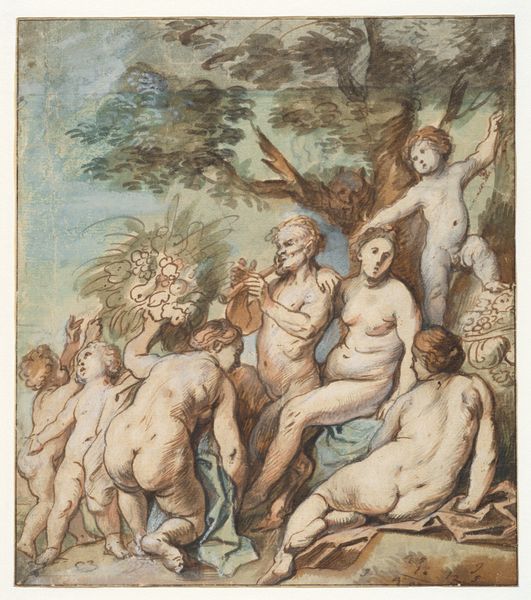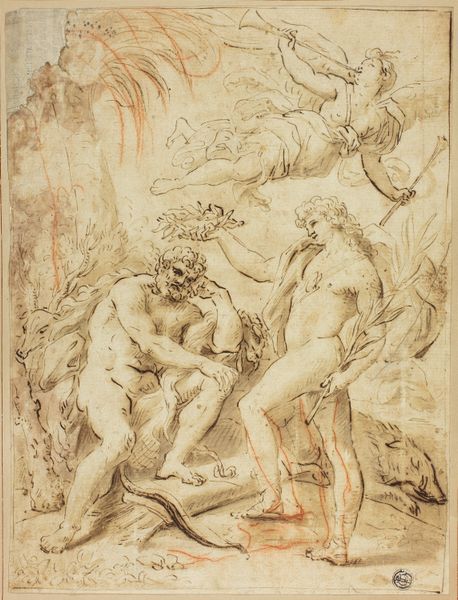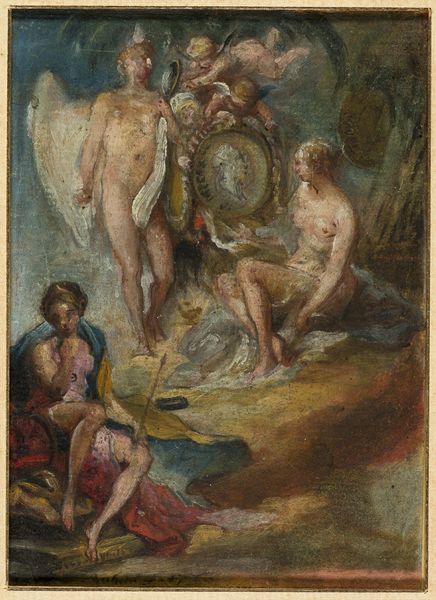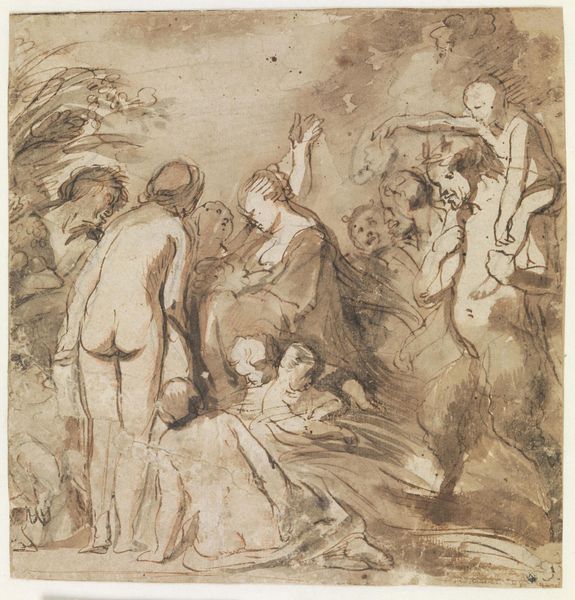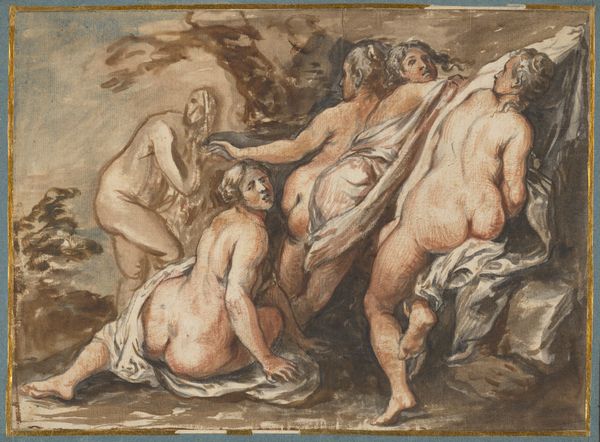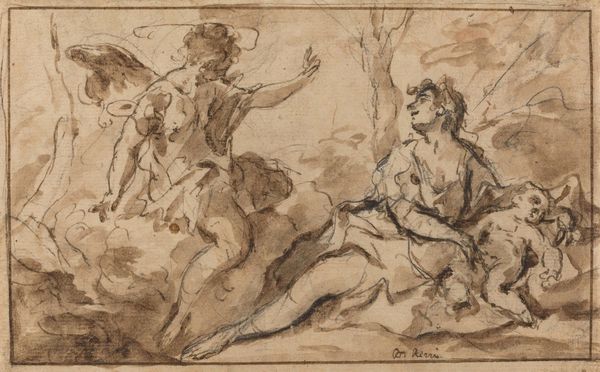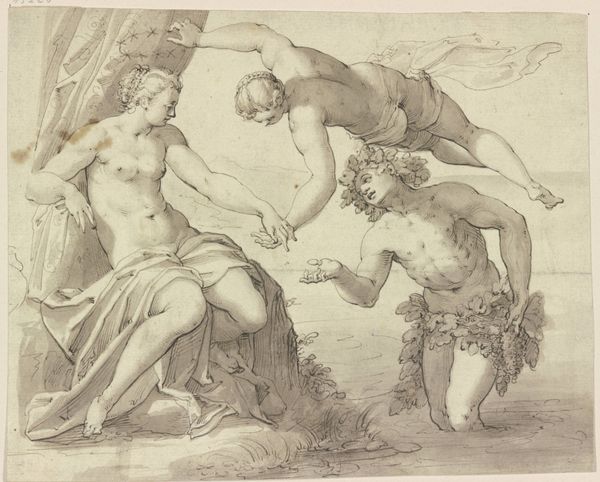
painting, paper, watercolor
#
painting
#
landscape
#
paper
#
watercolor
#
romanticism
#
genre-painting
#
nude
Copyright: Public Domain: Artvee
Curator: This watercolor on paper by Robert Smirke is entitled "Two Women Enjoying Their Time by a Stream." It presents a bucolic scene, almost dreamlike in its softness. What strikes you first about it? Editor: There's a delicate, almost melancholic air about it. The figures seem quite self-contained, despite being in a shared space. The colours feel muted, like a faded memory, all rendered in thin washes of pigment. Curator: Smirke was deeply engaged with Romanticism and, from my perspective, this comes across vividly in the execution, notably with the choice of watercolor washes, the very swift application that suggests plein air practice, and its association with a specific kind of artisanal practice for the aesthetic and cultural consumption of elites. The relative absence of detailed labor really heightens the impact here. Editor: Absolutely, and I see it through the lens of 18th-century society and its preoccupation with the idyllic and the classical. Bathing was a frequent subject of painting but in painting as it developed throughout that century, and in England particularly, there was an emerging discourse around public and private and what should be viewed. Are we intruding on something intimate? Is the suggestion of an ewer significant, given we know the importantance of the Bath spa in Britain at this time? Curator: That reading holds a lot of water, pun intended. Speaking of water, the transparency of watercolor certainly lends itself to depicting the stream, don’t you think? You can practically see the layers of pigment mimicking the play of light through water. Smirke would likely have used what we call "soft" paper, probably fabricated from pulped textiles to maximise water retention. The result creates an incredibly pleasing depth to the final piece, I feel. Editor: Indeed. But I think the composition subtly guides our interpretation too. One woman reclines, passively, a watcher. The other is active, participating with nature itself, entering the water. It presents a tension; what does Smirke say through this binary? Where do our sympathies lie, given we, the viewer, are watching them both? How can we ignore the implications of the artistic establishment's male gaze as it developed? Curator: These women really engage with their material surroundings, don’t they? They provide such tangible commentary on the role of natural materials in relation to human labour. Editor: I’d argue this painting encapsulates many contemporary ideas about idealised landscape and womanhood at a particularly interesting period of development in British art. The way this imagery then goes on to inform cultural perceptions—it’s quite a legacy!
Comments
No comments
Be the first to comment and join the conversation on the ultimate creative platform.

